![]()
![]()
![]()
Use LEFT and RIGHT arrow keys to navigate between flashcards;
Use UP and DOWN arrow keys to flip the card;
H to show hint;
A reads text to speech;
60 Cards in this Set
- Front
- Back
|
Where did Gothic Architecture style begin? |
St. Dennis France |
|
|
Early Gothic Features |
-Circular end -More integrated chapels -Rose window -Lots of stained glass -bigger buttressing and smaller walls to lower cost and to add in more stained windows |
|
|
Early Gothic Buildings |
The church of St. Dennis |
|
|
High Gothic Features |
-Bigger Arches -More pointed arches -Much more ornate -Focused on reaching up toward the heavens |
|
|
High Gothic Churches |
-Notre Dame, Chartes(Considered to be first) -Notre Dame, Amiens -Ste.-Chapelle -St.-Maclou |
|
|
Gothic Architecture in England structures |
-No rose window but is still filled with windows -arches are smaller -More flat faced -Towers are in a different style and in different places -Usually squared off -Didn't reach to heavens as much as Frances' -More focus on horizontal -Perpendicular style |
|
|
Perpendicular style |
Characterized by emphasis on vertical elements, complex vaulting, division of walls into rectangular panels |
|
|
Fan Vaulting |
Characterizes most of England's gothic Architecture in that england like to stress fancy vaulting in their cathedrals |
|
|
British Gothic Architecture |
Salisbury Cathedral Gloucester Cathedral King's College Chapel |
|
|
Commune |
A new type of political entity that is a collection of city-dwellers that band together for tasks such as defense, trade regulation, taxation, Law, etc. |
|
|
Cities that were very influential to the growth of Gothic Arch (that aren't in France and Britain) |
-Sienna -Vienna -Bruges -Monpazier -Lubeck |
|
|
Important Building types in Medieval Cities |
-city hall -wasn't needed till communes gained popularity -cathedral |
|
|
Italian Gothic features |
-More Geometric and square building plans -No radiating chapels -Wider aisles -Romanesque dome -Not as decorative as most gothic arch -Heavily influenced by Romanesque period -More paintings than sculptures |
|
|
Italian Gothic Buildings |
-Plazzo Publico -Piazza del Campo -Sienna Cathedral -Santa Croce -Palazzo Vecchio -Orsanmichele |
|
|
German Gothic Architecture Features |
-A lot similar to French style -Flying buttresses and windows -Made mostly of brick unlike the limestone in France -Tall arches and vaulted ceilings -Very ornamented |
|

|
Church of st. Mary in Lubeck, Germany |
|
|
Belgium Gothic City |
Burges |
|
|
Important Gothic buildings in Burges |
Cloth hall |
|
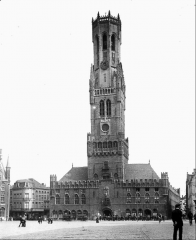
|
Cloth hall in Burges |
|
|
Bastides |
Towns established in the 13th-14th Centuries in France, mainly for trade, but more for asserting control over territory for agriculture and trade. |
|
|
Why people moved to Bastides |
Many people were drawn there since all previous debts and crimes were forgiven if they moved there. There was also the incentive that the people who lived there would have rights and freedoms other people didn't have. Also there was was an economic incentive since there was such a thriving market community |
|
|
Renaissance Ideals |
-A rebirth of ancient ideas in a current setting -Broader set of ideas -Classicism -Humanism -Scientific Learning -Proportion and order |
|
|
What was the most important city for Early Renaissance Architecture |
Florence, Italy |
|
|
Classicism |
Turn to ancient Roman lit and art. A rediscovery of "The Ten Books of Architecture" by Vitruvius |
|
|
Humanism |
Man and his capabilities become the chief area of inquiry. Before Renaissance, the human as a creature was not taken into account in architecture |
|
|
Scientific Learning |
Experimentation, individual exploration became method of learning |
|
|
Proportion and Order |
Attempt to understand universe through proportion and order |
|
|
Important Renaissance Buildings |
-Foundling hospital -San Lorenzo -Santa Maria del Fiore (Florence Cathedral) -Plazzo Medici -Sant' Andrea |
|
|
Filippo Brunelleschi |
-Considered to be the first of the Renaissance Architects -Was not trained as an architect -Made his first mark with his design of the door to the great baptistry, even though his wasn't chosen -Created scientific perspective -Designed and built the Florence Cathedral's dome |
|
|
Renaissance Urban Residences |
-Shift from towers to Palazzos -Palazzos were built as quasi military bases because of warring families -Very symmetrical and built with classical ideals -Also the palazzo was mostly a women's domain since men were out of the house all day for work |
|
|
Leon Battista Alberti |
-Represented the new type of designer, the modern architect -Unlike Brunelleschi, he was an educated man in law and in the classics -Wrote the first architecture book since Ancient Rome -Put more Romanesque feature in his work -Alberti represented the Modern conception of an Architect |
|
|
High Renaissance Features |
-Relied heavily on Symmetry and geometric shapes
|
|
|
High Renaissance Buildings in Rome/Italy |
-S. Maria della Consolazione -Tempietto at S. Pietro in Montorio -Plan for St. Peter's Basilica |
|
|
V.B. Donato Bramante |
-Was one of the influential High Renaissance Architects -Designed Tempietto at S. Pietro in Montorio and a set of plans for St. Peter's Basilica -Used elements from classic Roman architecture, like the use of the orders, but also used the Renaissance ideal of symmetry and geometric figures |
|
|
Pienza |
Rebuilt on the order of Pope Pius II and rebuilt by Bernardo Rossellino in a High Renaissance style. Compared to later High Renaissance city projects, it had very little resemblance to Classical Roman forms and focused more on geometric patterns |
|
|
Rossellino's buildings |
-Pienza Cathedral -Palazzo Piccolomini |
|
|
Antonio Avelino (Filarete) |
-Hired to design Sforzinda for the Duke Sforza of Milan -Attempted to create a perfect geometric plan and link the planning and architecture of a city with its social and moral content |
|
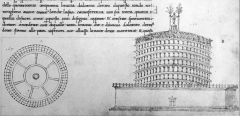
|
House of Vice and Virtue -Filarete's design at a moral institution where youths would learn right from wrong |
|
|
Mannerism |
An approach to architecture that is more personalized that connected to any style Ex. Giulio Romano, Michelangelo Buonarroti, Giacomo Barozzi da Vignola |
|
|
Romano's mannerism in the Palazzo del Te |
-ruff/unfinished columns -complex geometric shapes on the ceiling -Keystones but no arch -blind openings, broken beam, no uniform shape, random rustification |
|
|
Vignola's mannerisms in the Villa Giulia |
-Has an unfinished look and the column stones look like they become the arch's stones -Front and back are completely different |
|
|
Rome Remade |
-Rome was in a poor state at the time and needed to be restored to its former glory -Michelangelo and many other famous artist were put in charge of recreating the beauty of Rome |
|
|
Michelangelo's Contributions to Rome's restoration |
-Campidoglio -Strada Pia -Porta Pia |
|
|
Campidoglio |
-Michelangelo's restoration of Capitoline Hill that took the focus away from the ruins of Ancient Rome and placed it on St. Peter's Basilica -Uses Giant Orders -Marcus Aurelius statue in the center of the courtyard to symbolize the glorious imperial past of Rome -Was a perfect place for the pope to show off the new Roman image |
|
|
Giant orders |
Orders that extend more than one story tall |
|
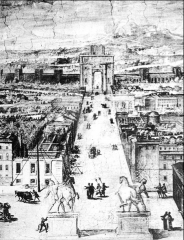
|
Strada and Porta Pia -Designed by Michelangelo for Pope Pius IV -Sought to connect central Rome to the outskirts and to make the town more legible and Monumental -Never came to fruition but the gates were still created to serve as a new portal through the ancient Aurelian wall |
|
|
The Plan of Sixtus V |
-Since a lot of the most influential places in Rome were isolated by the disordered streets in Rome, Sixtus V designed a set of plans that consisted of major roads that would connect the city better than it had ever been before and became the most influential plan of redesigning Rome |
|
|
Andrea Padillo |
-Through his works and writings, he became one of the most influential Renaissance architects -His most famous work was in Veneto, the area around Venice -He wrote, "The Four Books of Architecture", and put in lots of images to better describe what was being described |
|
|
Andrea Padillo's Buildings |
-Il Redentor -Villa Rotunda |
|
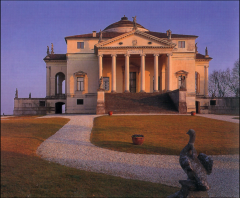
|
Villa Rotunda -Built to resemble the Pantheon -Padillo took monumental forms and applied them to residential buildings -Located near Venice |
|
|
Charlemange |
-Greatest ruler in the Carolingian dynasty and attempted to create a new Holy Roman Empire |
|
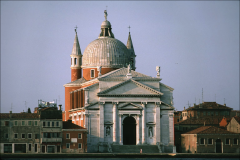
|
Il Redentor -Built by Padillo -Didn't use flying buttresses instead used a different type of buttressing -Was white on the inside, which was considered a "pure" color -Located in Venice |
|

|
Campidoligo -Built by Michelangelo and took the focus off the ruins of Ancient Rome and put it on St. Peter's -Located in Rome -Rome Remade |
|
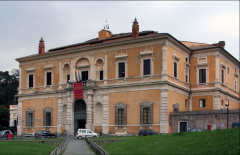
|
Villa Giulia -Located in Rome -High Renaissance, Mannerisms -Designed by Vignola |
|
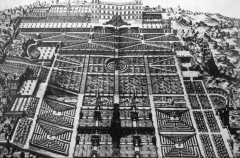
|
Vila d' Este -Built by Pirro Ligorio and its patron is Cardinal Ippolito d' Este -High Renaissance, Mannerisms |
|
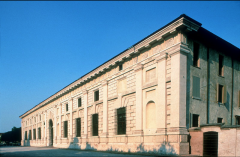
|
Palazzo del Te -Designed by Giulio Romano -High Renaissance, Mannerisms -Weirdness in style, unfinished columns, broken beams, no uniform design |
|
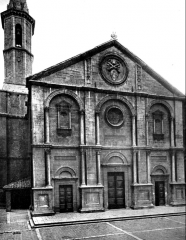
|
Cathedral Pienza -built by Bernado Russellino -A hall church (aisles are as long as the walls are tall) -Trifold arches on facade -High Renaissance |
|
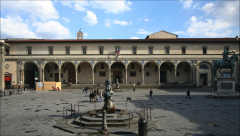
|
Foundling Hospital -Built by Brunelleschi -Often described as the first Renaissance building -Composed of many principles of Classical forms |
|
|
Greek orders |
-Ionic -Doric -Corinthian |
|
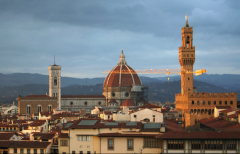
|
Dome of Santa Maria del Fiore -Designed by Brunelleschi -A dome of this size and hight had never been done before |

